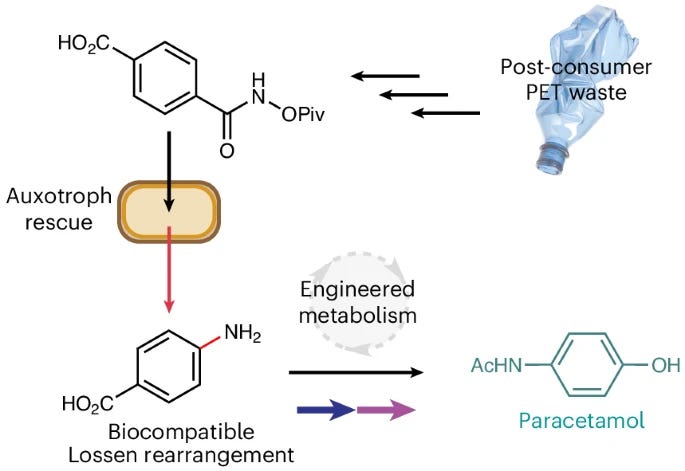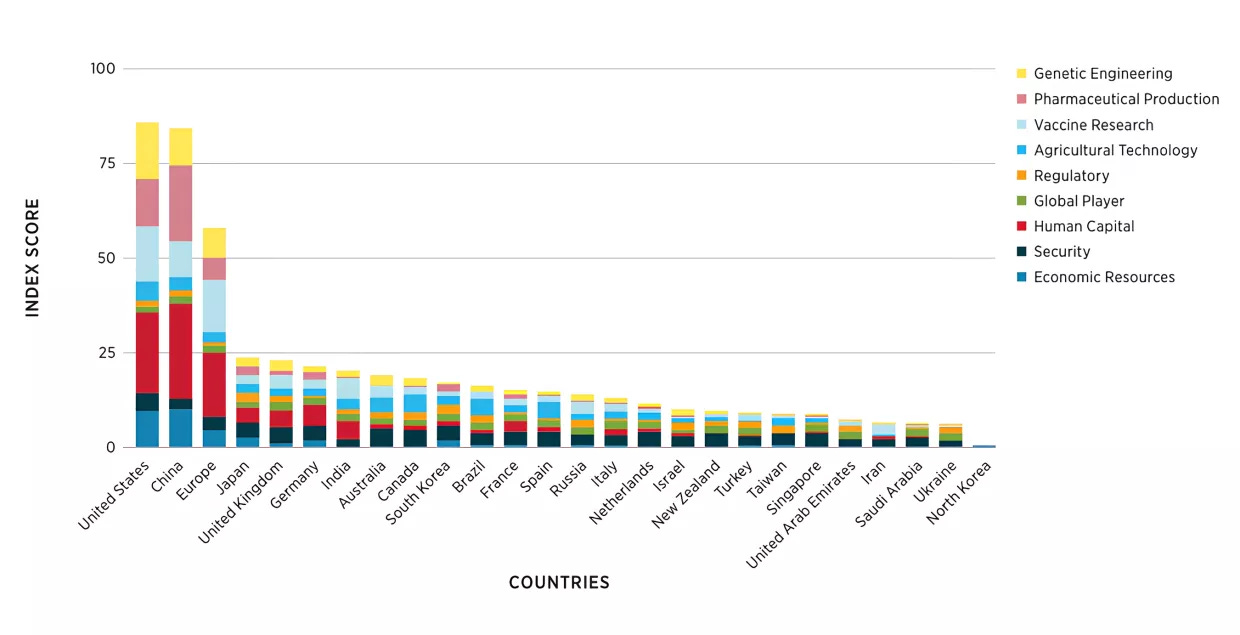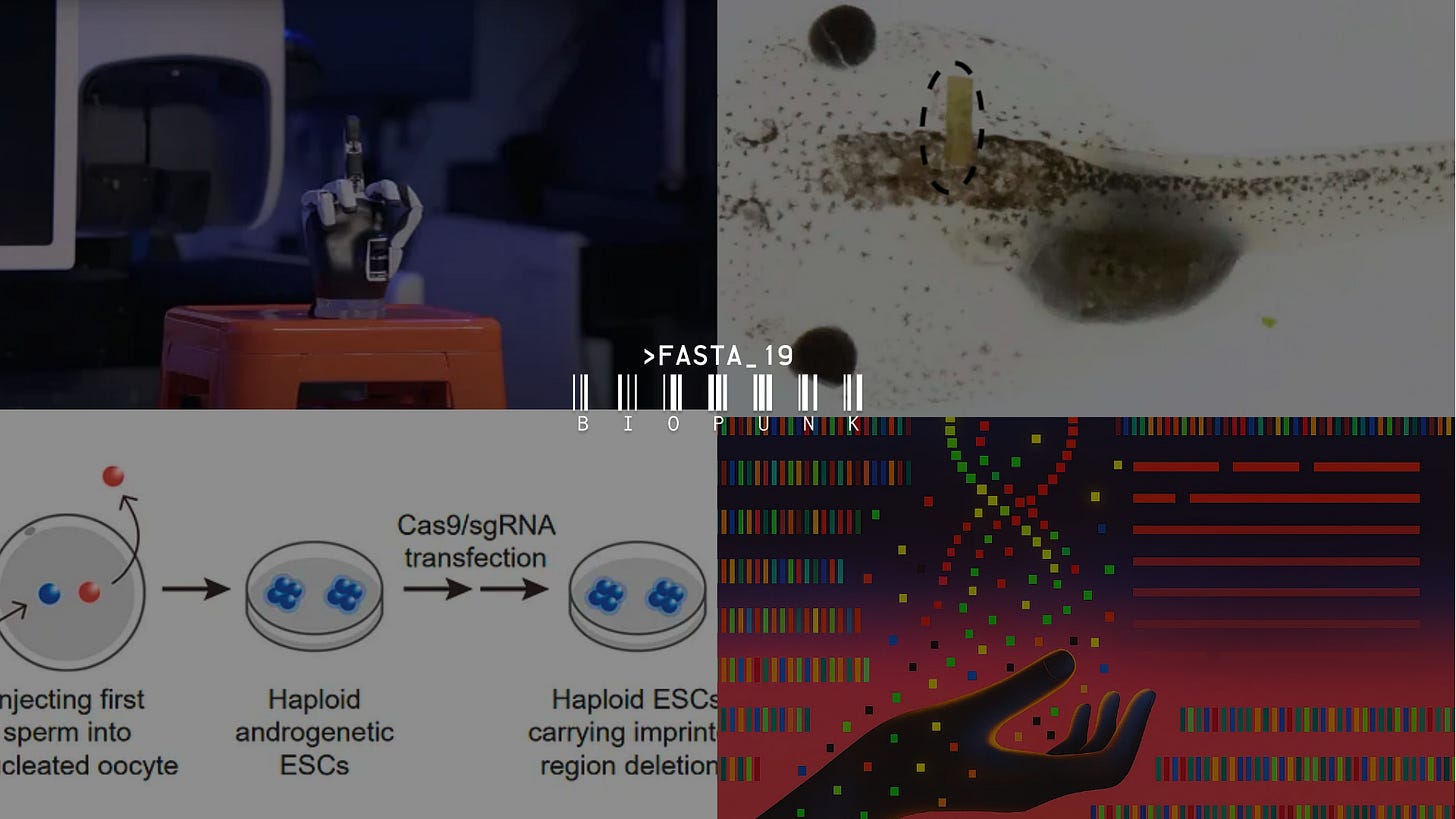>FASTA_19
PET-based drugs; China to shorten clinical trials, bipaternal offspring, snake venom, £10M for synthetic genomes; $140M for DraigTx; Neuralink updates; Cyborg tadpoles & Axoft; creators biotech
>FASTA: weekly short reads of the biotech ecosystem | Papers and patents, acquisitions and bankruptcies, biotech philosophy | Read in under 5 min | Emails every Wednesday | Follow on LinkedIn and X.
1/10 - PET-based drugs
“Plastic-eating enzymes” is the basic example both tiktokers and boring professors use when they try to explain why biotech will change the world. Several startups have come along and some have collaborated with big brands like On, PUMA, and L’OCCITANE en Provence… is it actually profitable1 though?
“Turn the freaking bottle into something more expensive” — “Paracetamol!” Replied the Edinburgh researchers who engineered two E. coli strains to break down PET and convert it into paracetamol. At room temperature, with virtually no carbon emissions, and at a max yield of 92%.


2/10 - China to shorten clinical trials
Biomanufacturing industries like the above are to become sexy again because the US needs to find a way to beat China in biotech. Not just in manufacturing, but innovation. Last year, for example, large pharma licensed 31% of their external molecules from China, compared with 6% in 2020.
On the regulations front, China’s National Medical Products Administration (NMPA) has proposed to cut the clinical trial review waiting period for novel medicines to 30 working days (down from 60), for key medicines like pediatric drugs for cancers and rare diseases. This would match the FDA’s timeline.

3/10 - Bipaternal offspring
Forget about launching drugs to the market or rockets to the moon. What country can birth the first baby from a gay couple? I’m talking two biological dads or moms having a baby that is only theirs in DNA. Sam Altman, both gay and wealthy (haha), is an investor in Conception, a biotech co making human oocytes from female blood.
This year in China…
Keep reading with a 7-day free trial
Subscribe to Biopunk to keep reading this post and get 7 days of free access to the full post archives.



